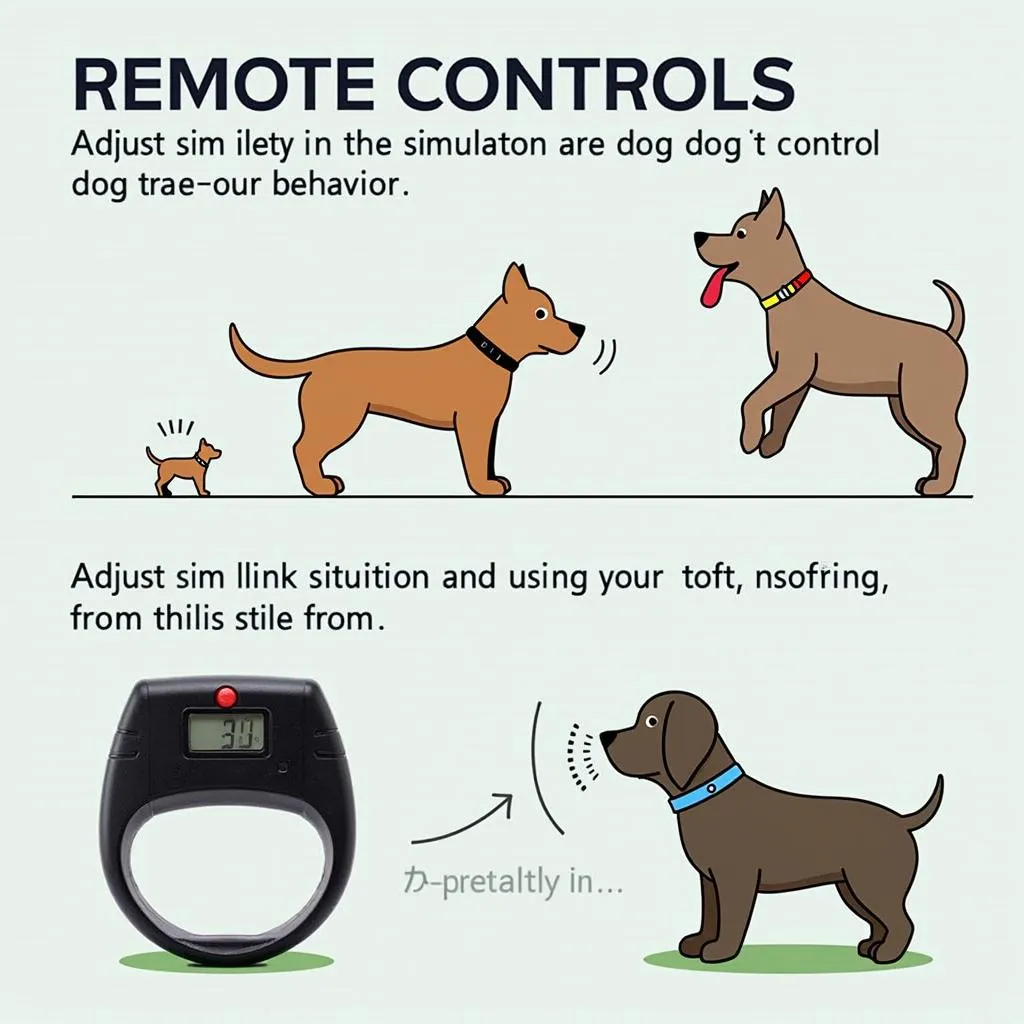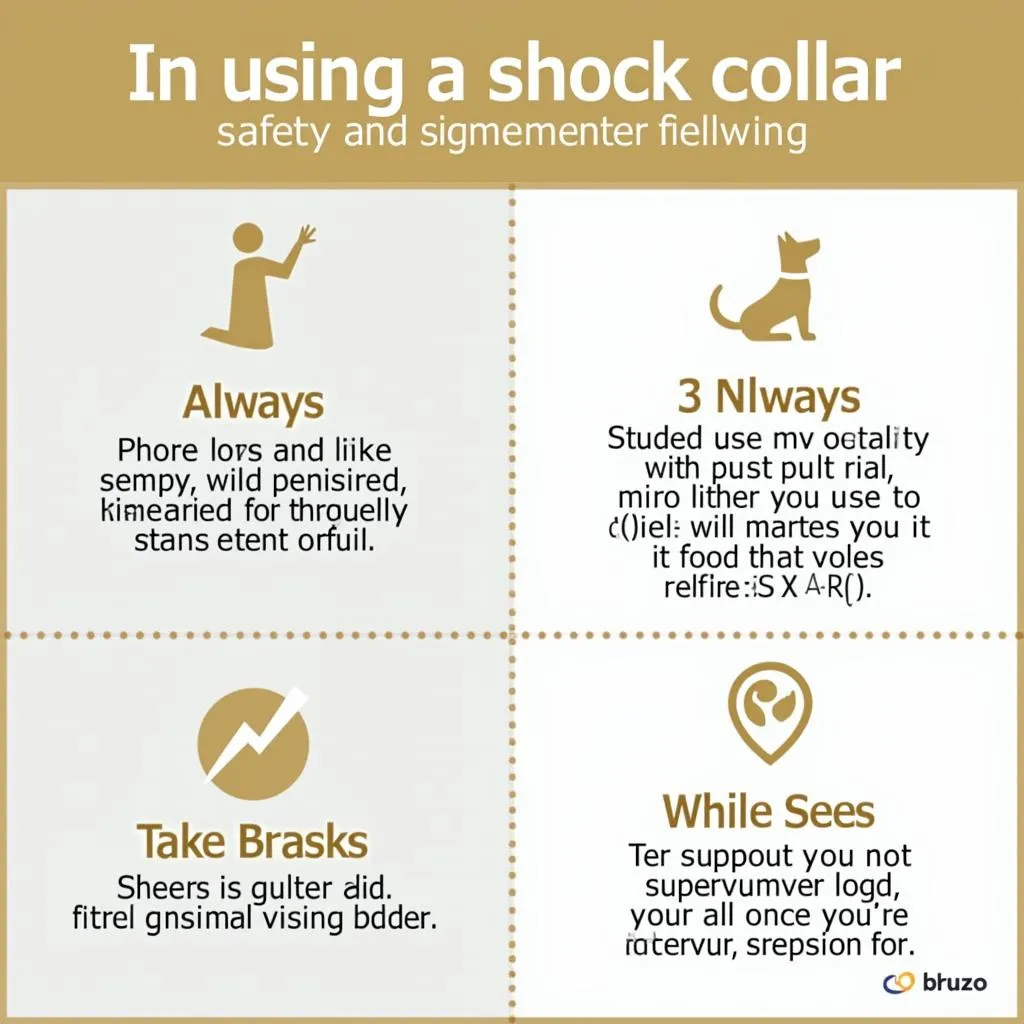“Cái gì khó, cái gì dễ, cái gì tốt, cái gì xấu”, these are the questions that every pet parent asks themselves when it comes to training their furry friend. And when it comes to training tools, shock collars have always been a hot topic. While some people swear by them, others are hesitant, worried about potential harm to their beloved pets.
So, what about the smallest shock collar for dogs? Is it truly the answer to your training woes, or is it just another gadget that could potentially cause more problems than it solves? Let’s dive into the world of shock collars and figure out what’s best for your furry companion.
What is a Shock Collar?
A shock collar is a training device that uses a mild electrical stimulation to correct unwanted behaviors in dogs. They typically come in various sizes, with the smallest shock collar being designed for smaller breeds.
How Does a Shock Collar Work?
The smallest shock collar, like its larger counterparts, works by sending a signal through a collar to a receiver that’s attached to the dog’s neck. This signal creates a mild electrical stimulation, which acts as a correction for certain behaviors.
Should You Use a Shock Collar?
This is where things get tricky. While some trainers believe that shock collars can be effective in certain situations, others argue that they can be cruel and potentially harmful. The key is to consider the pros and cons carefully and make an informed decision.
Advantages of a Shock Collar:
- Immediate Correction: Shock collars provide immediate feedback, which can be helpful for dogs that are slow to learn or have a strong “willful” nature.
- Effectiveness for Certain Behaviors: These collars are particularly effective for correcting behaviors like barking, digging, and chasing.
- Long-Range Control: Smaller shock collars are also known for their long-range control, allowing you to manage your dog’s behavior from a distance.
Disadvantages of a Shock Collar:
- Potential for Pain and Injury: Some dogs may experience pain and discomfort from the electrical stimulation.
- Psychological Impact: Shock collars can create fear and anxiety in dogs, leading to potential behavioral problems.
- Ethical Concerns: Many animal welfare organizations and professional trainers strongly discourage the use of shock collars due to their potential for harm and distress.
Alternatives to Shock Collars
There are plenty of humane and effective alternatives to shock collars for dog training, such as:
- Positive Reinforcement: This method focuses on rewarding desired behaviors with treats, praise, and playtime.
- Clicker Training: This technique uses a clicker to mark a behavior, followed by a reward, creating a positive association.
- E-Collar: An e-collar is similar to a shock collar but uses vibrations or sound instead of electrical stimulation to correct behavior.
- Head Halters: These devices gently guide a dog’s head, preventing them from pulling on the leash.
Choosing the Right Training Tool
The best training tool for your dog depends on their breed, age, temperament, and personality. If you’re still unsure, consult a professional dog trainer who can provide personalized advice and guidance.
Finding the Smallest Shock Collar for Your Dog
If you’ve decided that a shock collar might be the right choice for your dog, finding the smallest shock collar that fits your dog’s size is crucial.
Factors to Consider:
- Dog’s Neck Size: Measure your dog’s neck circumference to ensure a comfortable and secure fit.
- Collar Material: Look for a collar made of durable and comfortable material that won’t irritate your dog’s skin.
- Adjustable Straps: Ensure the collar has adjustable straps to provide a secure fit without being too tight.
- Receiver Size and Placement: Ensure the receiver is small enough to fit comfortably on your dog’s neck and is located in a position where it won’t be easily dislodged.
 Small Shock Collar for Small Breeds
Small Shock Collar for Small Breeds
What to Look for in a Small Shock Collar
When shopping for the smallest shock collar for your dog, consider these key features:
- Multiple Stimulation Levels: Look for a collar with multiple stimulation levels to allow you to adjust the intensity based on your dog’s sensitivity.
- Remote Control: A remote control with easy-to-use buttons is essential for effectively managing your dog’s behavior.
- Water Resistance: A water-resistant collar is ideal for dogs that enjoy swimming or playing in wet environments.
- Battery Life: Look for a collar with a long battery life so you’re not constantly having to recharge it.
 Shock Collar with Remote Control
Shock Collar with Remote Control
Finding the Best Small Shock Collar for Your Dog
If you’re in Hanoi, there are several pet stores in districts like Cau Giay, Hoan Kiem, and Dong Da that carry a wide selection of shock collars. Ask for a small shock collar specifically designed for your dog’s size and breed.
Safety Precautions
- Always start with the lowest stimulation level: Test the collar on yourself first to understand the sensation and gradually increase the intensity as needed.
- Never leave the collar on your dog for extended periods: Take breaks and allow your dog to rest.
- Supervise your dog while using the collar: Ensure your dog is in a safe environment and closely monitor their behavior.
- Consult a professional trainer: A professional trainer can help you choose the right shock collar and teach you how to use it safely and effectively.
 Small Shock Collar Safety Precautions
Small Shock Collar Safety Precautions
Spiritual Perspective
While shock collars can be a controversial topic, we must remember that, in Vietnamese culture, respect for all living beings is paramount. If you decide to use a shock collar, ensure it’s done with compassion and respect for your dog’s well-being.
Conclusion
The decision to use a shock collar is a personal one, and there are valid arguments on both sides. Weigh the pros and cons carefully and consider if it’s truly the right choice for your dog. Remember, the most important thing is to prioritize your dog’s safety, well-being, and happiness. If you’re unsure, consult a professional dog trainer who can guide you towards the best training methods for your furry friend.
When it comes to your furry friend, choose compassion, choose kindness, and choose the path that leads to a happy and harmonious relationship.
Leave a Reply
You must be logged in to post a comment.